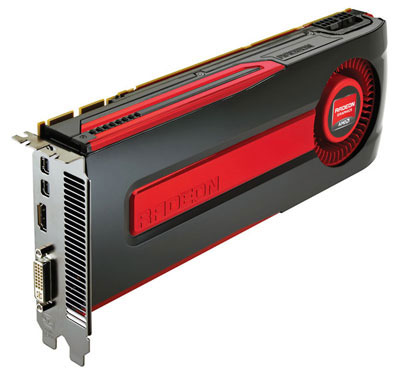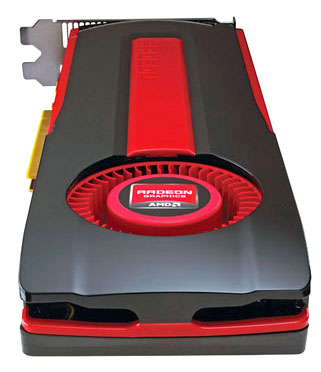Our Aim
To provide you with an overview on New And existing technologies, hopefully helping you understand the changes in the technology. Together with the overviews we hope to bring topical issues to light from a series of independent reviewers saving you the time And hassle of fact finding over the web.
We will over time provide you with quality content which you can browse and subscribe to at your leisure.
TekSpek 's

AMD Radeon HD 7970
Date issued:
AMD 7970 Radeon HD
AMD has today announced the world's fastest single-GPU graphics card. Known as the Radeon HD 7970 and due to be made available through the company's roster of board partners from January 9, 2012 onwards, the new card uses a grounds-up architecture that'll be the cornerstone of AMD's graphics innovation for years to come.

Radeon HD 7970 is positioned as an ultra-high-end graphics card aimed at the enthusiast who wants superlative performance. In order to fully understand how it differs from the presently-available Radeon HD 6970, the card which it effectively replaces, here's a table with some of the key specifications. A dual-GPU Radeon HD 6990 is also included for reference, though you should take care not to directly compare the two - one uses a single GPU and the other takes in two.
| GPU | Radeon HD 7970 (3,072MB) |
Radeon HD 6970 (2,048MB) |
Radeon HD 6990 (4,096MB) |
|---|---|---|---|
| Codename | Tahiti | Cayman | Antilles |
| DX API | 11.1 | 11 | 11 |
| Architecture | GCN | VLIW | VLIW |
| Process | 28nm | 40nm | 40nm |
| Transistors | 4.3bn | 2.64bn | 5.28bn |
| Die Size | 378mm² | 389mm² | 2 x 389mm² |
| Processors | 2,048 | 1,536 | 3,072 |
| Compute units | 32 | 24 | 48 |
| Texture Units | 128 | 96 | 192 |
| ROP Units | 32 | 32 | 64 |
| GPU Clock (MHz) | 925 | 880 | 830 |
| Shader Clock (MHz) | 925 | 880 | 830 |
| GFLOPS | 3,789 | 2,703 | 5,099 |
| Memory Clock (MHz) | 5,500 | 5,500 | 5,000 |
| Memory Bus (bits) | 384 | 256 | 2 x 256 |
| Max bandwidth (GB/s) | 264 | 176 | 2 x 160 |
| Power Connectors | 8+6 | 8+6 | 8+8 |
| TDP (watts) | 250 | 250 | 375 |
| GFLOPS per watt | 18.04 | 11.26 | 13.6 |
| CrossFire Support | 4-way | 4-way | 2-way |
| MSRP | $549 | $349 | $699 |
Compared to the HD 6970, the new card packs in considerably more transistors, processors, texture-units and memory bandwidth, and it is these facets that help increase overall performance. The card is specified with a standard 3GB of GDDR5 memory, and this will help when, for example, using multiple screens for gaming, as more on-card memory smoothes performance when there's a need to drive lots of pixels.
AMD is able to keep the card's TDP - also known as power-draw - at the same 250W because the Radeon HD 7970 is manufactured on a more-efficient, smaller process known as 28nm. Simplifying it somewhat, smaller transistors require less power to switch on and off compared to larger ones, and it's this inherent electrical quality that enables AMD to increase the count from 2.64bn to 4.3bn - and also performance - without also adding to the energy consumption.
A new architecture - GCN
While the Radeon HD 7970 is obviously a more powerful card than its immediate predecessor, AMD has also taken the opportunity of making the architecture more efficient. It needs to do this because modern graphics cards are used for more than just playing games, and there's now an established trend for utilising high-powered GPUs for general-purpose computing, where complex calculations use the graphics card's fantastic parallel processing ability to solve mathematical problems more quickly. Such calculations include molecular modelling, weather forecasting, cryptography, medical imaging and high-performance computing, to name but a few.
Current Radeon cards use a VLIW setup that has been the mainstay of AMD's graphics architecture for the last seven years. This VLIW is well-suited to pure graphics, and games developers understand just how to code for it. However, VLIW represents a rigid system that is at odds with the flexibility demanded by a broad range of general-purpose computing programs detailed above.
AMD has made concerted efforts to better align its VLIW architecture to the needs of GPGPU compute in the last two major Radeon releases. Now, however, it is making a clean break with the Radeon HD 7970 by bringing a new design philosophy to bear. It is known as Graphics Core Next (GCN) and by shifting resources across the GPU while also making each of the HD 7970's 32 GCN compute units far more independent, it enables a wide range of GPU compute applications to run more smoothly.
In fact, it is reasonable to assume that the Radeon HD 7970 is a general-compute device that is also a gaming card, such is the focus on raising efficiency for compute-centric applications.
Performance
Though AMD has made conscious choices about the direction it is going to take with graphics from this launch onwards, it cannot forget that most enthusiasts, especially those that shop at SCAN, are interested in its gaming prowess rather than advancements in general processing. Independent tests show that the Radeon HD 7970 3GB is, on average, 40 per cent faster than a Radeon HD 6970 and up to 20 per cent faster than the rival GeForce GTX 580 from NVIDIA.
Such speed means it will comfortably play practically any game at a 1080p high-definition resolution with high-quality settings in tow, and, should you wish to place monitors side-by-side for multi-screen Eyefinity action, it is powerful enough to drive multiple screens from its four digital outputs, comprising of dual-link DVI, HDMI, and two DisplayPort connectors.
But it's not all about foot-to-the-floor power, however, as AMD also introduces a feature called ZeroCore Power, where the card virtually switches off (and fan stops) when in what is called a long idle state - this occurs when the monitor is turned off by the operating system. Importantly, additional cards in a multi-GPU system also benefit from the ZeroCore Power technology when not gaming, helping to keep power-draw down to low levels and the system quiet when, say, browsing the web or watching a movie - you don't need to have two or three slave cards active in such situations, clearly.
Thoughts
AMD has made a bold move with the Radeon HD 7970 3GB graphics card. Taking a risk in changing just how the card works and also by moving to a brand-new manufacturing process, the initial signs are good. The company will introduce a slower, cheaper variant of the card, called Radeon HD 7950, early in 2012, though there are no current plans to migrate the GCN architecture to mainstream cards in the £100-£200 bracket.

As always, enthusiasts need to pay handsomely to accrue the latest hardware. AMD states that the Radeon HD 7970 will be available in limited quantities from January 9 onwards, with the exact price dependent upon the specific card partner and bundle. Expect to pay around £500 for the privilege of owning the most impressive single-GPU graphics card on the market.
SCAN will have a full list of Radeon HD 7970 cards available on January 9, 2012, so you know exactly where to head if you want the very best in graphics hardware in the New Year. Happy shopping!